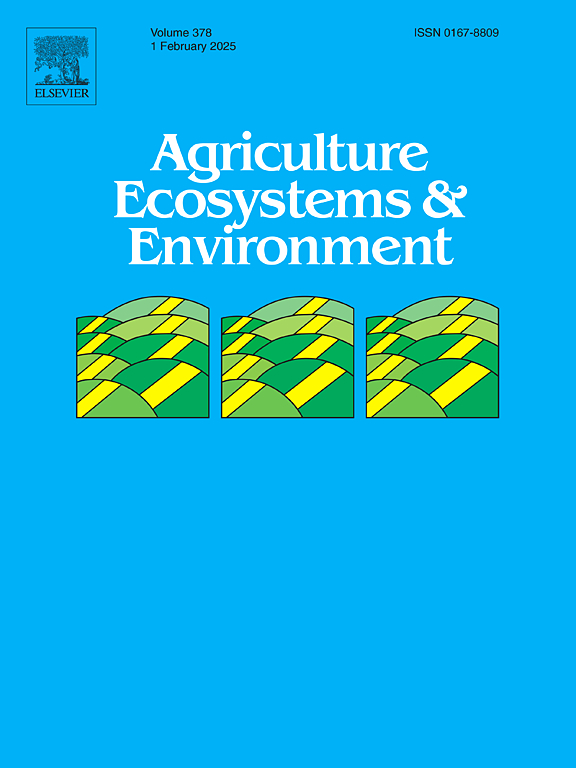Grazing mediates soil nutrient stocks through changing the plant functional composition and plant biomass allocation in alpine grassland
IF 6
1区 农林科学
Q1 AGRICULTURE, MULTIDISCIPLINARY
引用次数: 0
Abstract
Grazing can affect soil nutrient pools in a top-down process primarily through foraging, trampling and excreting of livestock. However, how grazing affects the relative contribution of plant biomass allocation to soil stoichiometry and nutrient storage in alpine grassland remains unclear. In this study, a 3-year serial grazing trail was conducted under 2 grazing regimes (continuous grazing and rotational grazing) and 3 grazing intensities (light grazing, medium grazing and heavy grazing) in an alpine steppe on Qinghai-Tibetan Plateau (QTP) to examine the effects of plant biomass allocation on soil stoichiometry and soil nutrient stock. The results showed that grazing decreased the aboveground biomass, whereas increased the belowground biomass and R:S. Grazing increased SOC stock and soil TP stock but did not affect the TN stock. Meanwhile, grazing caused an increasing in C: N and N: P. The shifts in belowground biomass and R: S regulates the changes of C: N: P stoichiometry. The plant functional composition regulated the changes of SOC stock, TN stock and TP stock. The relative contribution of R: S ratio to SOC stock and TN stock were increased with grazing intensities. We concluded that moderately rotational grazing is beneficial to better plant resource allocation and to regulate the soil nutrient stock in the alpine grassland ecosystem. These findings are crucial to identify the feasible grazing practices for the QTP’s alpine grasslands.
放牧通过改变高寒草地植物功能组成和生物量分配调节土壤养分储量
放牧对土壤养分库的影响是自上而下的,主要是通过牲畜的觅食、践踏和排泄。然而,放牧如何影响高寒草地植物生物量分配对土壤化学计量和养分储存的相对贡献尚不清楚。以青藏高原某高寒草原为研究对象,在2种放牧制度(连续放牧和轮牧)和3种放牧强度(轻度放牧、中度放牧和重度放牧)下进行了3年连续放牧试验,研究了植物生物量分配对土壤化学计量特征和土壤养分储量的影响。结果表明:放牧减少了地上生物量,增加了地下生物量和R:S;放牧增加了土壤有机碳储量和全磷储量,但对全氮储量没有影响。同时,放牧引起了C: N和N: P的增加,地下生物量和R: S的变化调节了C: N: P化学计量的变化。植物功能组成调节着土壤有机碳、全氮和总磷的变化。R: S比对土壤有机碳储量和全氮储量的相对贡献随放牧强度的增加而增加。因此,适度轮牧有利于高寒草地生态系统植物资源的优化配置和土壤养分储量的调节。这些发现对于确定青藏高原高寒草原的可行放牧方式具有重要意义。
本文章由计算机程序翻译,如有差异,请以英文原文为准。
求助全文
约1分钟内获得全文
求助全文
来源期刊

Agriculture, Ecosystems & Environment
环境科学-环境科学
CiteScore
11.70
自引率
9.10%
发文量
392
审稿时长
26 days
期刊介绍:
Agriculture, Ecosystems and Environment publishes scientific articles dealing with the interface between agroecosystems and the natural environment, specifically how agriculture influences the environment and how changes in that environment impact agroecosystems. Preference is given to papers from experimental and observational research at the field, system or landscape level, from studies that enhance our understanding of processes using data-based biophysical modelling, and papers that bridge scientific disciplines and integrate knowledge. All papers should be placed in an international or wide comparative context.
 求助内容:
求助内容: 应助结果提醒方式:
应助结果提醒方式:


